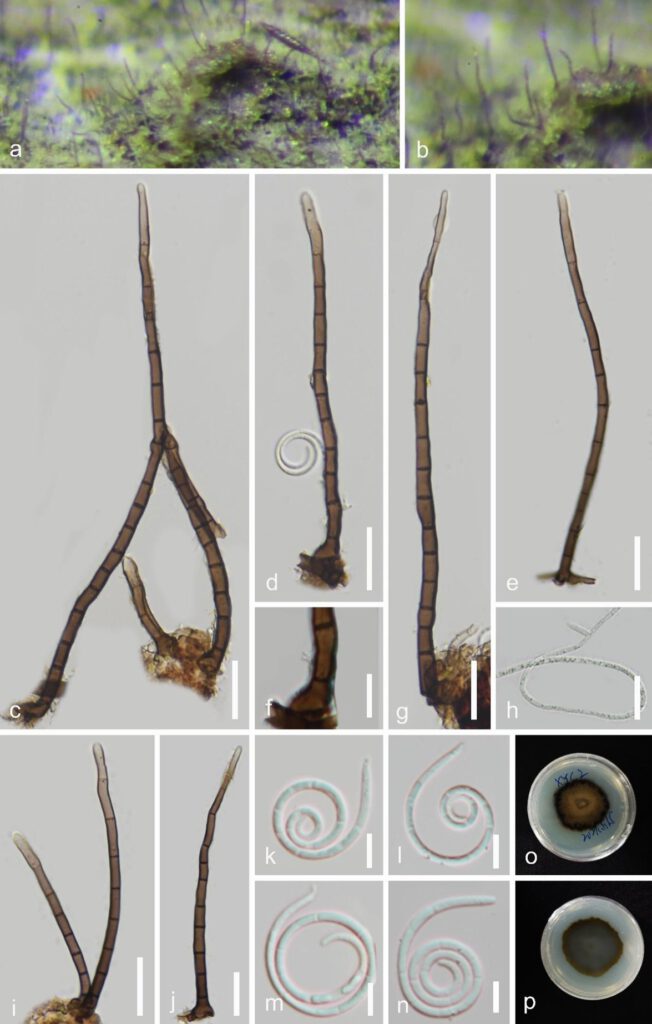Helicosporium viridisporum Y.Z. Lu & J.C. Kang, sp. nov. Fig. 3
MycoBank number: MB; Index Fungorum number: IF; Facesoffungi number: FoF 13102;
Holotype: GZAAS 22-2008
Etymology: ‘viridisporum’ referring to the bright lime green conidia in natural woody substrate.
Saprobic on decaying wood in a freshwater stream. Sexual morph Undetermined. Asexual morph Hyphomycetous, helicosporous. Colonies on the substratum superficial, effuse, gregarious, bright lime green. Mycelium partly immersed, brown to dark brown, septate, branched hyphae, with masses of crowded, glistening conidia. Conidiophores 80–206 µm long, 3–7 µm wide ( = 146 × 5 µm, n = 30), macronematous, mononematous, erect, setiferous, cylindrical, septate, brown to dark brown, smooth-walled. Conidiogenous cells holoblastic, polyblastic, discrete, determinate, denticulate, arising laterally from the lower parts of conidiophores as tiny tooth-like protrusions, hyaline to pale brown, smooth-walled. Conidia solitary, 12–14 µm diam. and conidial filament 1–2 µm wide ( = 13 × 1.5 µm, n = 30), 75–97 µm long, pleurogenous, helicoid, tightly coiled 2–31/3 times, becoming loosely coiled in water, rounded at tip, guttulate, indistinctly multi-septate, hyaline to pale green, smooth-walled.

Figure 3. Helicosporium viridisporum (GZAAS 22-2008, holotype). a, b Colony on decaying wood. c–e, g, i, j Conidiophores and conidia. f Conidiogenous cells. h Germinating conidium. k–n Conidia. o, p Colonies on PDA from above and below. Scale bars: c–f, i–j = 20 µm, g–h = 10 µm, k–n = 5 µm
